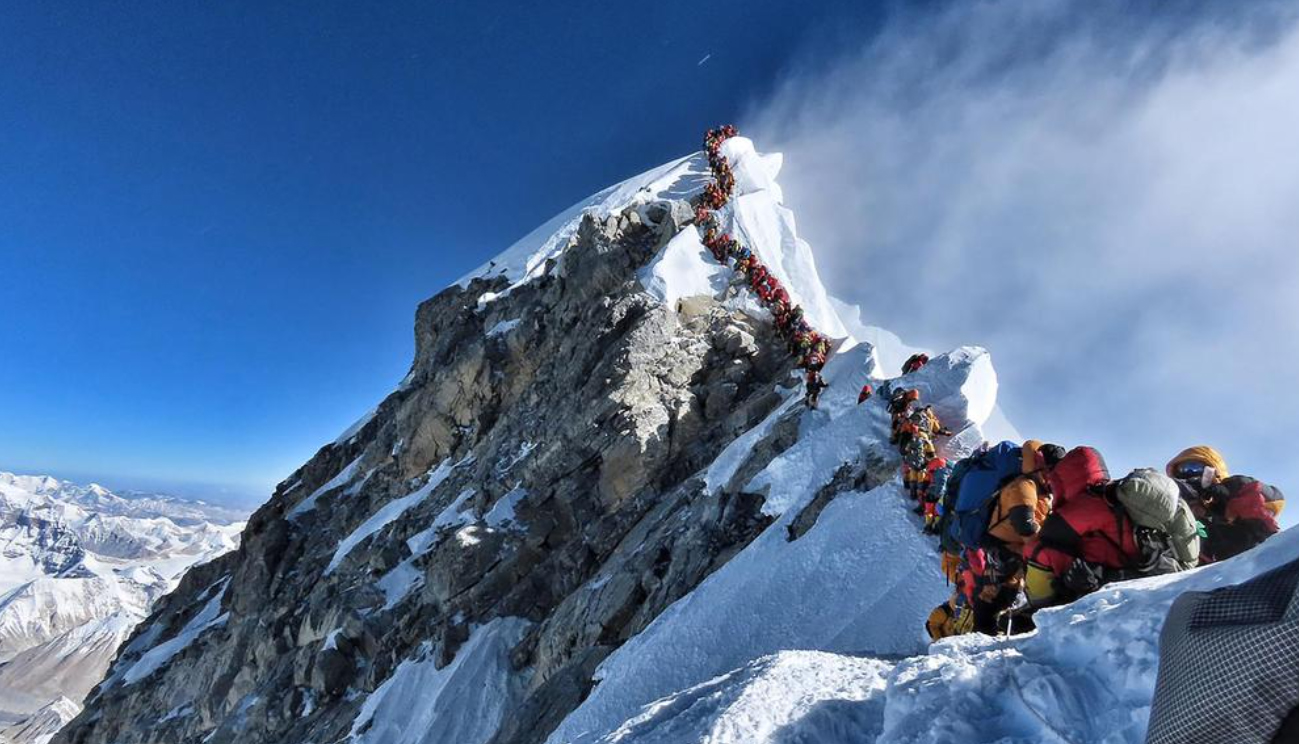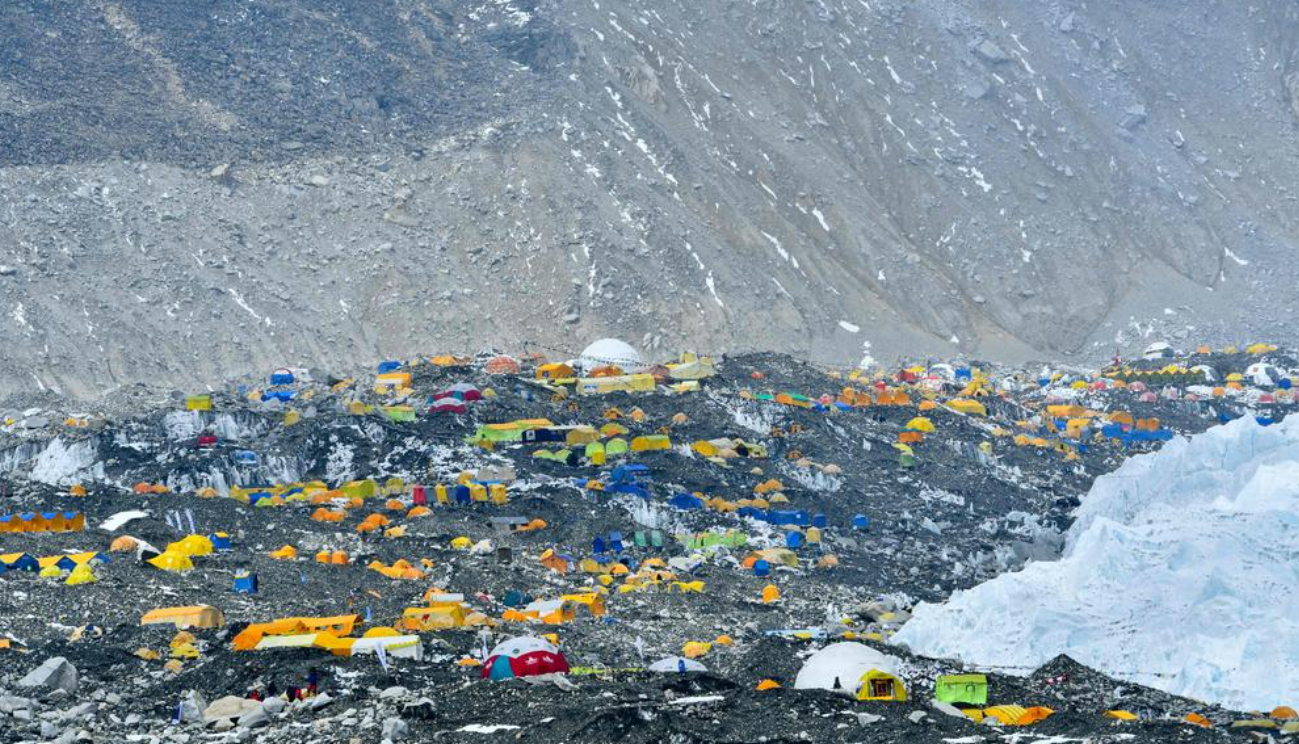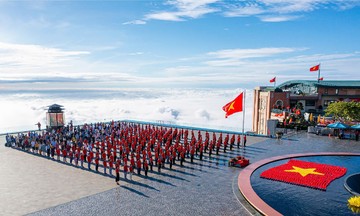Located on Everest's north slope, the area known as "Rainbow Valley" is far from the vibrant scene its name suggests. Instead, it serves as a somber graveyard for hundreds of climbers who perished pursuing the summit.
Part of the "death zone" above 8,000 meters, the area is characterized by dangerously low oxygen levels, extreme weather, and ever-present risks. In the 2023 climbing season alone, 18 people died, making it Everest's deadliest year on record.
 |
Climbers queue to reach the summit of Everest. Photo: *AFP* |
The deaths of Australian climber Jason Bernard Kennison and others, like Briton Robin Haynes Fisher who collapsed just 150 meters from the summit, highlight the mountain's unforgiving nature.
Retrieving a body can cost over 100,000 USD and poses further risks to rescuers. Consequently, many remain on the mountainside, their bodies preserved by the extreme cold.
Beyond bodies, Everest also faces a growing trash problem. Climbers often abandon tents, oxygen tanks, and other waste. Veteran guide Tenzi Sherpa shared images of Camp IV littered with debris, calling it "the dirtiest camp I have ever seen".
Some of the deceased have become grim landmarks. "Green Boots," the body of Tsewang Paljor (who died in 1996), is often cited as a marker along the trail. The area where he rests, known as "Green Boots' Cave," once served as a resting spot for climbers.
 |
Tents of expedition teams are seen at Base Camp on the way to Mount Everest. Photo: *AFP* |
Another, "Sleeping Beauty," is Francys Arsentiev, the first American woman to summit Everest without supplemental oxygen. She and her husband perished during their descent. In 2007, a climber returned, wrapped her body in an American flag, and moved her out of sight.
Recently, climbers Fay Manners and Michelle Dvorak were stranded for nearly 80 hours at over 6,000 meters in India after their equipment fell into a crevasse. They survived after a three-day rescue, sharing their ordeal on social media.
Despite its dangers and losses, Everest continues to draw thousands each year. The ultimate price, however, can be death—and a permanent resting place amidst the snow.
Mount Everest, also known as Chomolungma in Tibetan, is located in the Mahalangur Himal sub-range of the Himalayas and is the world's highest mountain above sea level. According to the latest figures jointly recognized by Nepal and China, Everest's official height is 8,848.86 meters.
Everest was affected by the major earthquake in Nepal on 25/4/2015. Subsequent surveys revealed the mountain lost 2.4 cm in height and shifted approximately 3 cm southwest.
Anh Minh (*Sun, News*)












